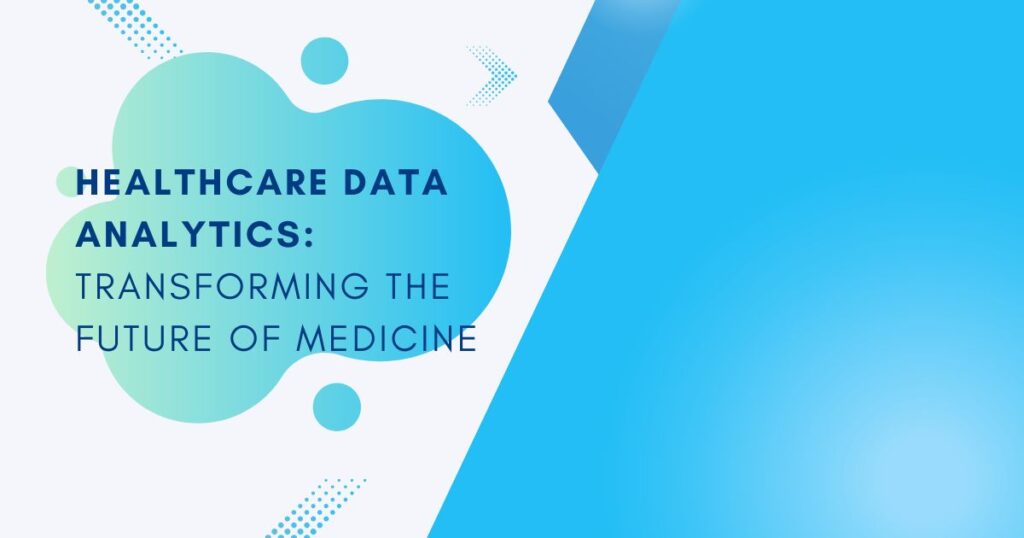In today’s world, data isn’t just numbers—it’s the heartbeat of smarter decisions, especially in healthcare. The fusion of healthcare and data analytics has reshaped how we diagnose, treat, and manage health on a personal and population level. If you’re wondering how hospitals are saving more lives, reducing costs, and improving care quality—healthcare data analytics is the secret sauce.
Let’s dive into how this powerful technology is driving a revolution in modern healthcare.
What is Healthcare Data Analytics?
Healthcare data analytics refers to the use of data-driven methods to extract insights from health data. It involves collecting, storing, managing, and analyzing medical and operational data to enhance decision-making.
Think of it as having a super-powered microscope that doesn’t just look at symptoms but dives deep into patterns, trends, and outcomes across thousands (or millions) of cases.
Why is Healthcare Data Analytics Important?
Let’s face it—healthcare isn’t just about treating illnesses anymore. It’s about prevention, efficiency, and patient satisfaction. Here’s why data analytics is a game-changer:
-
Early diagnosis and prevention
-
Customized treatment plans
-
Cost reduction and resource optimization
-
Operational efficiency
-
Real-time decision-making
In short, it turns reactive care into proactive, predictive, and personalized care.
Types of Healthcare Data Analytics
1. Descriptive Analytics
This helps answer: What happened?
Example: Summarizing hospital readmission rates over the last quarter.
2. Diagnostic Analytics
This digs deeper: Why did it happen?
Example: Analyzing root causes for increased ER wait times.
3. Predictive Analytics
This looks ahead: What might happen?
Example: Forecasting which patients are at risk of diabetes.
4. Prescriptive Analytics
This guides action: What should we do?
Example: Suggesting personalized treatment options based on genetic data.
Key Applications of Healthcare Data Analytics
1. Patient Care Optimization
Hospitals use data to monitor vitals in real time, flag deterioration early, and prevent complications. Electronic Health Records (EHRs) provide a comprehensive view of each patient, enabling better, faster decisions.
2. Disease Surveillance and Management
Remember how COVID-19 spread was tracked globally? That’s analytics in action. It helps monitor outbreaks, understand disease progression, and deploy resources efficiently.
3. Clinical Decision Support
AI and data tools can suggest diagnoses, flag dangerous drug interactions, or recommend next steps—all while doctors maintain full control.
4. Hospital Operations and Management
From reducing patient wait times to managing staff schedules and optimizing bed usage—analytics drives smoother hospital operations.
5. Fraud Detection and Risk Management
By analyzing billing and claims data, healthcare providers can detect fraud, abuse, or errors that may cost millions.
How Big Data Powers Healthcare Analytics
Healthcare generates massive data daily—from wearables, imaging, lab results, and doctor’s notes. Big Data tools help make sense of it all.
Structured vs. Unstructured Data
-
Structured: Lab values, ICD codes, insurance claims
-
Unstructured: Doctor’s notes, scanned documents, x-ray images
Modern analytics platforms can now process both, unlocking valuable insights that were previously buried in chaos.
Role of AI and Machine Learning in Healthcare Analytics
Artificial Intelligence (AI) and Machine Learning (ML) take data analytics up a notch.
Some Use Cases:
-
AI-assisted radiology: Detecting tumors in X-rays faster than human eyes.
-
Predictive modeling: Flagging patients likely to develop chronic conditions.
-
NLP (Natural Language Processing): Understanding text in patient records.
These tools aren’t replacing doctors—they’re giving them superpowers.
Population Health Management
Data helps providers understand trends in chronic diseases, vaccination coverage, and health disparities. This is vital for shaping public health policy and targeted interventions.
Imagine being able to prevent heart attacks across a city by recognizing early indicators from health data. That’s population-level impact.
Personalized Medicine
Everyone’s body is different. Analytics allows treatment based on individual data—like genetics, lifestyle, and past responses to meds.
This means better outcomes, fewer side effects, and more efficient care.
Challenges in Healthcare Data Analytics
As powerful as analytics is, it’s not without hurdles:
-
Data privacy and HIPAA compliance
-
Data silos across different providers
-
Lack of skilled data professionals in healthcare
-
Interoperability between systems
-
High implementation costs
Overcoming these is key to unlocking the full potential of healthcare analytics.
Security and Compliance in Health Data
Protecting patient data is non-negotiable. Regulations like HIPAA in the U.S. ensure strict data protection standards.
Analytics platforms must ensure encryption, access control, and regular audits. After all, trust is everything in healthcare.
Healthcare Analytics in Action: Real-World Examples
Cleveland Clinic
Uses predictive models to identify at-risk patients and reduce readmissions.
Kaiser Permanente
Leverages analytics to improve chronic disease management and preventative care.
Mount Sinai Hospital
Uses AI to optimize emergency room operations and reduce patient wait times.
These aren’t just experiments—they’re everyday success stories proving analytics works.
The Future of Healthcare Data Analytics
The future? It’s bright. With IoT devices, real-time monitoring, and AI, we’re heading toward a world where:
-
Patients get personalized treatment before symptoms appear.
-
Doctors make split-second life-saving decisions with full data support.
-
Hospitals become smarter, leaner, and more efficient.
Expect more integration with genomics, wearables, and even mental health insights.
Getting Started with Healthcare Data Analytics
If you’re a healthcare provider or institution thinking of diving in:
-
Start small – pick a pilot project
-
Invest in EHR and data platforms
-
Train your team in analytics tools
-
Focus on measurable goals
-
Ensure compliance and security
Remember: it’s a journey, not a sprint.
Conclusion
Healthcare data analytics isn’t just a buzzword—it’s the backbone of future-ready healthcare. From saving lives to cutting costs, enhancing experiences to advancing science, the possibilities are endless.
The real magic happens when data meets empathy—when insights meet action. With the right tools and mindset, healthcare systems worldwide can unlock better outcomes for every patient, every time.
FAQs
Q1. How is data collected for healthcare analytics?
Data is collected through EHRs, wearable devices, lab systems, imaging tools, insurance claims, and more.
Q2. What tools are used in healthcare data analytics?
Tools include platforms like Tableau, Power BI, SAS, Apache Hadoop, and machine learning libraries like TensorFlow and scikit-learn.
Q3. Can data analytics help with mental health care?
Yes, analytics can monitor patterns, predict risk, and personalize mental health treatment using data from apps, EHRs, and patient history.
Q4. Is patient data secure when using analytics platforms?
Absolutely, provided the platform follows strict standards like HIPAA and includes encryption, role-based access, and regular audits.
Q5. What are the career opportunities in healthcare data analytics?
Roles include data analyst, healthcare informatics specialist, clinical data manager, and data scientist with a healthcare focus.
- Healthcare Data Analytics: Transforming the Future of Medicine
- This comprehensive guide explores how Healthcare Data Analytics is revolutionizing modern medicine through predictive care, AI-driven diagnostics, cost savings, and personalized treatments—ushering in a smarter, data-powered future for global healthcare.
- #HealthcareDataAnalytics, #HealthTech, #PredictiveAnalytics, #BigDataInHealthcare, #AIinHealthcare, #MedicalInformatics, #DataDrivenHealthcare, #EHRAnalytics, #HealthcareInnovation, #PersonalizedMedicine
Related posts:
 High-Quality Biomedical Waste Incinerators & Laboratory Glassware Made in India
High-Quality Biomedical Waste Incinerators & Laboratory Glassware Made in India
 Understanding the Role of IoT in Modern Manufacturing: A Comprehensive Guide to Smart Factories and Industrial Transformation
Understanding the Role of IoT in Modern Manufacturing: A Comprehensive Guide to Smart Factories and Industrial Transformation
 Best Account Management Software for All Businesses – EmizenTech
Best Account Management Software for All Businesses – EmizenTech
 Top 15 Global Website Design Companies You Can Hire in the 2025
Top 15 Global Website Design Companies You Can Hire in the 2025
 Empowering Qatari Retail Businesses with Microsoft Dynamics 365 Commerce
Empowering Qatari Retail Businesses with Microsoft Dynamics 365 Commerce
 Safety Procedures in Heavy Equipment Moving: Best Practices for Workplace Security
Safety Procedures in Heavy Equipment Moving: Best Practices for Workplace Security
 How Microinteractions Are Revolutionizing Mobile UI/UX Design in 2025
How Microinteractions Are Revolutionizing Mobile UI/UX Design in 2025
 How to Fix iPhone Screen Overheating Issues and Prevent Future Damage
How to Fix iPhone Screen Overheating Issues and Prevent Future Damage








